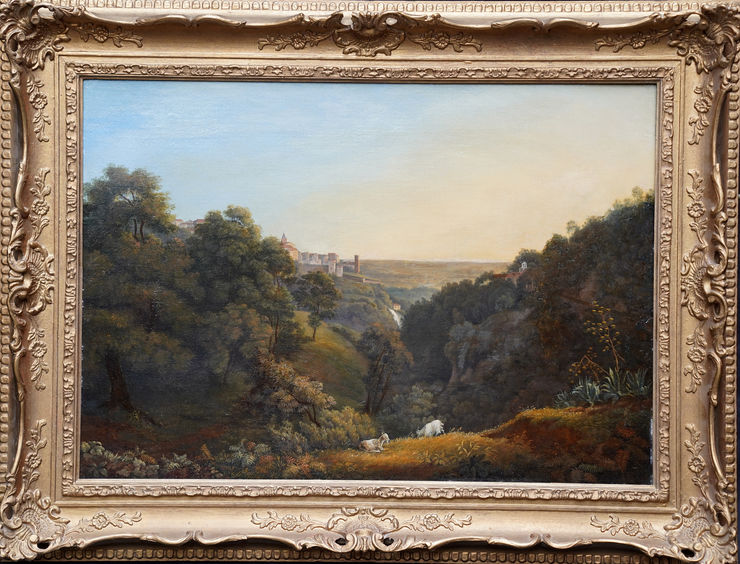| Biography |
Jean Joseph Xavier Bidauld was born in Carpentras, Provence, and in 1768 moved to Lyon, where he studied until 1774 with his brother, the landscape and still life painter Jean Pierre Xavier Bidauld (1745-1813). In the later 1770s the brothers traveled to Switzerland, where they discovered the beauty and grandeur of the Swiss landscape and were exposed to the ideas of Jean Jacques Rousseau (1712-1778). By 1783 Bidauld was in Paris, where he met the great landscape painter Claude Joseph Vernet (1714-1789) and likely took lessons from him. A picture dealer and perfumier, M. Dulac, took Bidauld under his wing and employed him in copying and restoring works of the seventeenth-century Dutch and Flemish schools.Dulac helped finance a trip to Italy that was also underwritten by the cardinal de Bernis. Bidauld arrived in Rome in November 1785, staying there for five years. During this time Bidauld made many trips into the Roman Campagna and further afield to the hill towns of Subiaco, Narni, Civita Castellana, Isola di Sora, the mountains of the Abruzzi, and south to Naples. He liked to be absorbed into nature, favoring remote, silent places, verdant valleys, rugged hills, and chasms with waterfalls and rushing streams. He was something of a pioneer of these sites, more than thirty years ahead of the generation of Camille Corot (1794-1875), who frequented these places in his student days in the 1820s with other landscape painters from all over Europe. While in Italy Bidauld favored painting in the open air, and he produced numerous oil studies on paper, many of which featured in the sale of his estate. His studies usually are not rapid, broadly handled, and sketchy, like those of his contemporary Pierre Henri de Valenciennes, for example (1750-1819). But his careful rendering of detail reflects a patient study of nature, and he paid close attention to the effects of light. His nature studies never include figures--he preferred the effect of total solitude--and when he made more idealized landscapes for exhibition and sale, he generally had other painters add the figures. On his return from Italy, Bidauld exhibited five paintings at the Salon of 1791, and from this time on his career became more public. He contributed regularly to the Salon until 1844. Bidauld became a major practitioner of polished, idealized landscapes, epitomizing the neoclassical style. His fame was international, and in 1800 he received an important commission from Charles IV of Spain (r. 1788-1808) for four landscapes for the Casita del Labrador, part of the royal palace of Aranjuez. He enjoyed the favor of the French royal family until 1814 and continued to receive official commissions during the reign of Louis XVIII (r. 1814-1824). Throughout this time he provided the landscape settings for medievalizing "troubadour" subjects, and between 1817 and 1822 he painted a series of scenes from French history for the Galerie de Diane in the royal palace of Fontainebleau. He painted many views of the fashionable parks around Paris, such as Joseph Bonaparte's Mortefontaine and the marquis de Girardin's Ermenonville, where a celebrated monument to Rousseau had been erected. Bidauld's lifelong admiration for Rousseau culminated in 1822, when he acquired Mont-Denis at Montmorency, Rousseau's last home. By the time of his death in 1846, when the naturalism of the Barbizon school was on the rise, Bidauld's neoclassical and medievalizing works seemed conservative and even archaic. |

